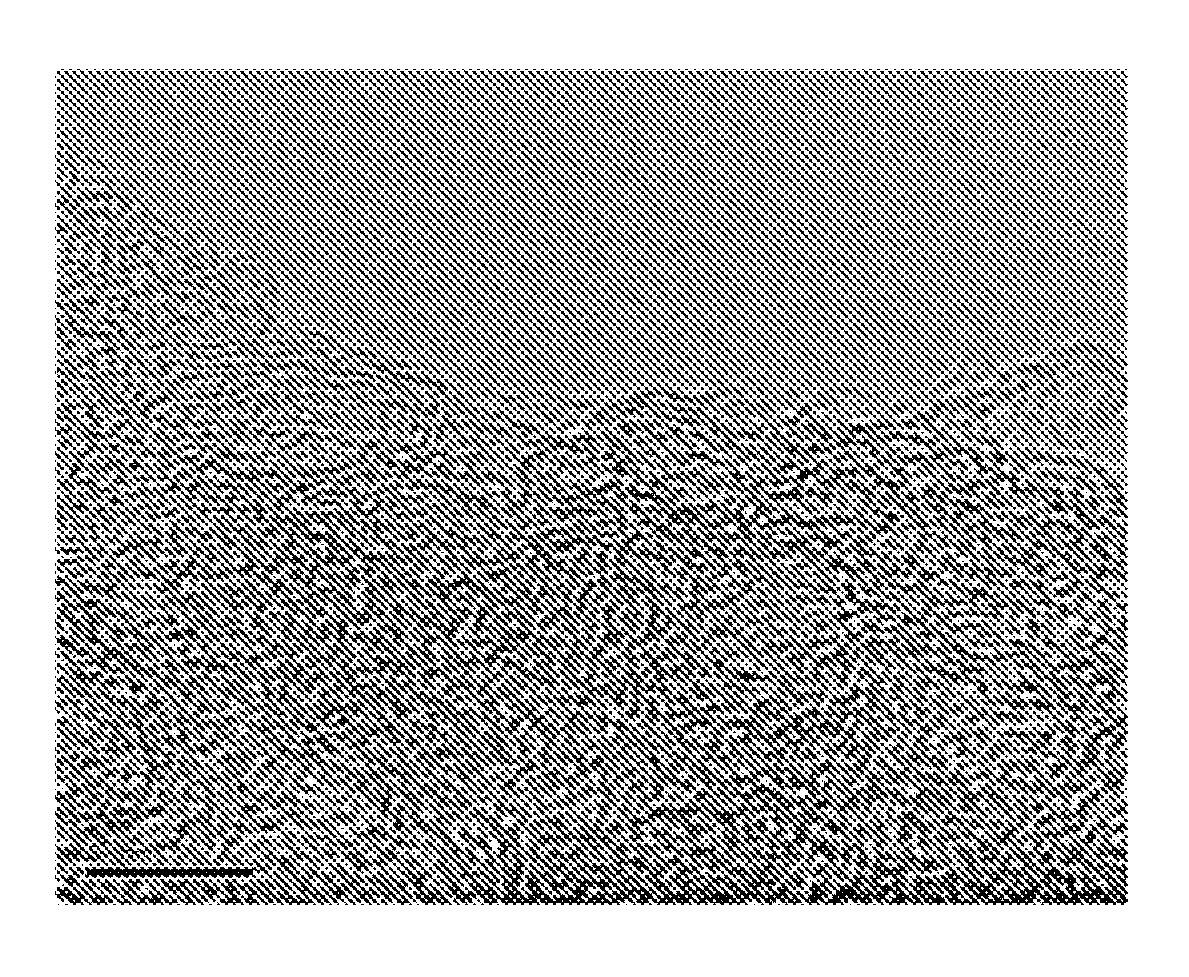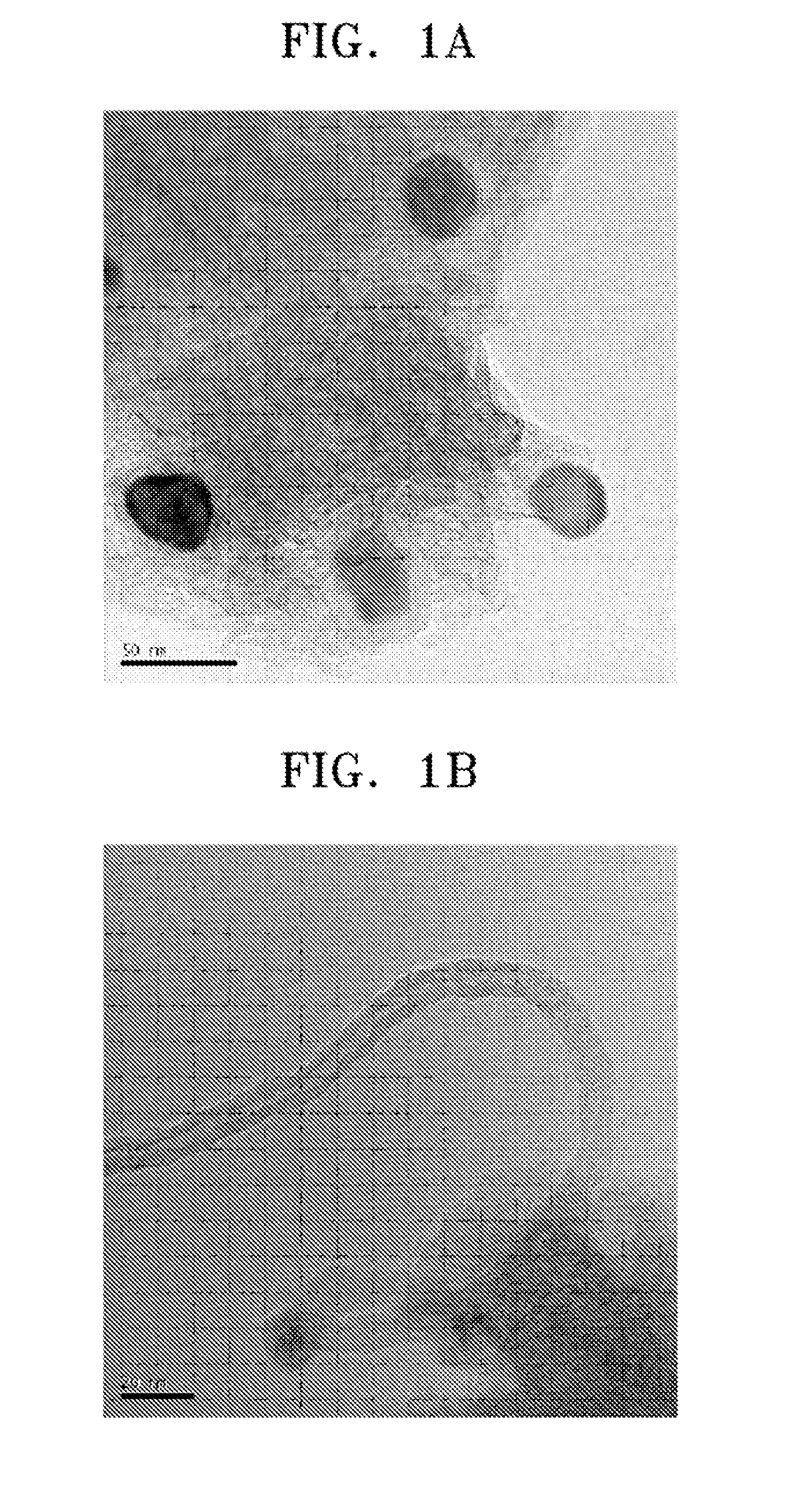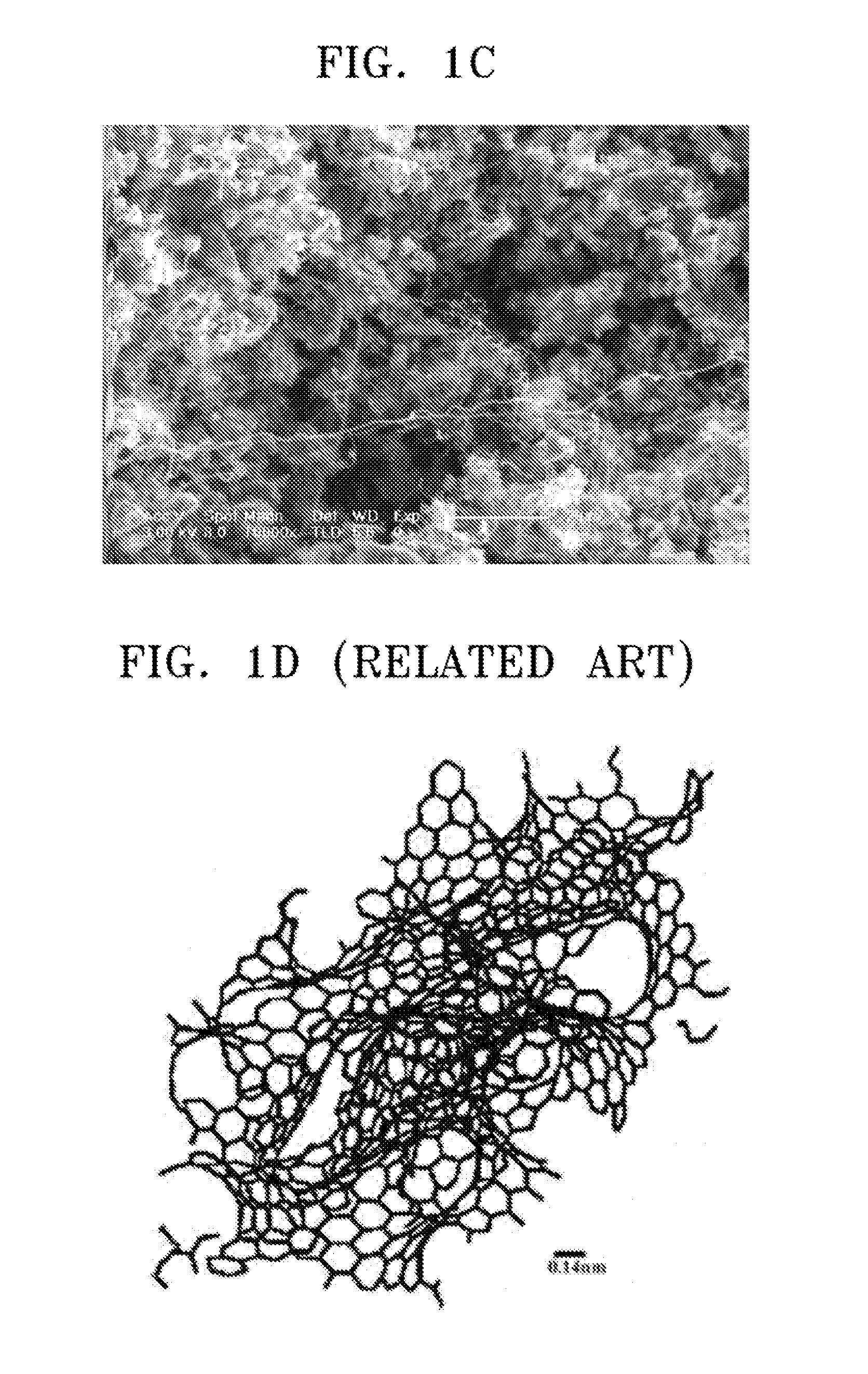Carbon nanotube hybrid system using carbide-derived carbon, a method of making the same, an electron emitter comprising the same, and an electron emission device comprising the electron emitter
a carbon nanotube and hybrid technology, applied in the manufacture of electrode systems, electric discharge tubes/lamps, transportation and packaging, etc., can solve the problems of poor uniformity and a short life of fiber type carbon nanotube materials, and the cost of raw materials of fiber type carbon nanotubes, and achieve excellent uniformity
- Summary
- Abstract
- Description
- Claims
- Application Information
AI Technical Summary
Benefits of technology
Problems solved by technology
Method used
Image
Examples
example 1
Preparation of Carbon Nanotube Hybrid System
[0079]100 g of α-SiC having an average diameter of 0.7 μm as a carbon precursor was maintained in a high temperature furnace composed of a graphite reaction chamber, a transformer, and the like. 0.5 L of Cl2 gas was applied to the high temperature furnace at 1000° C. per minute for 7 hours. Then, 30 g of carbide-derived carbon was prepared by extracting the Si from the carbon precursor.
[0080]The carbide-derived carbon was analyzed using Raman peak analysis, X-ray diffraction, and an electron microscope. As a result, the IG / ID ratio was about 0.5 to 1. A weak peak of a graphite (002) surface could be seen at 2θ=25°, and the electron diffraction pattern was a halo-pattern of amorphous carbon. Further, the specific surface area of the carbide-derived carbon after synthesizing the carbide-derived carbon was 1000 to 1100 m2 / g.
[0081]20 g of the carbide-derived carbon was mixed with 2 g of iron (III) nitrate (Fe(NO3)3) in an ethanol solution, the...
example 2
Preparation of Carbon Nanotube Hybrid System
[0082]9.5 g of carbide-derived carbon was prepared in the same manner as in Example 1 except that 100 g of NiC having an average diameter of 3 μm was used as a starting carbide compound and was heat treated at 500° C. for 2 hours. The carbide-derived carbon was analyzed using Raman peak analysis. The IG / ID ratio was about 1 to 1.3. A wide single peak of a graphite (002) surface could be seen at 2θ=25° using the X-ray diffraction. In addition, the specific surface area of the carbide-derived carbon after synthesizing the carbide-derived carbon was 1200 m2 / g.
[0083]The amount of nickel in the carbide-derived carbon was 10.5 parts by weight based on 100 parts by weight of the total amount of the carbide-derived carbon and nickel.
[0084]The resultant was purged with air to completely remove Cl2 gas in the furnace, and ethylene gas was supplied to the furnace and reacted at 900° C. to prepare a carbon nanotube hybrid system in which carbon nanotu...
example 3
Preparation of Carbon Nanotube Hybrid System
[0085]13 g of carbide-derived carbon was prepared in the same manner as in Example 1 except that 100 g of ZrC having an average diameter of 5 μm was used as a starting carbide compound and was heat treated at 600° C. for 5 hours. The carbide-derived carbon was analyzed using Raman peak analysis. The IG / ID ratio was about 1 to 1.3. A wide single peak of a graphite (002) surface could be seen at 2θ=25° using the X-ray diffraction. In addition, the specific surface area of the carbide-derived carbon after synthesizing the carbide-derived carbon was 1200 m2 / g.
[0086]A carbon nanotube hybrid system was prepared in the same manner as in Example 1 except that the carbide-derived carbon of Example 3 was used.
PUM
| Property | Measurement | Unit |
|---|---|---|
| particle size | aaaaa | aaaaa |
| particle size distribution | aaaaa | aaaaa |
| diameter | aaaaa | aaaaa |
Abstract
Description
Claims
Application Information
 Login to View More
Login to View More - R&D
- Intellectual Property
- Life Sciences
- Materials
- Tech Scout
- Unparalleled Data Quality
- Higher Quality Content
- 60% Fewer Hallucinations
Browse by: Latest US Patents, China's latest patents, Technical Efficacy Thesaurus, Application Domain, Technology Topic, Popular Technical Reports.
© 2025 PatSnap. All rights reserved.Legal|Privacy policy|Modern Slavery Act Transparency Statement|Sitemap|About US| Contact US: help@patsnap.com



